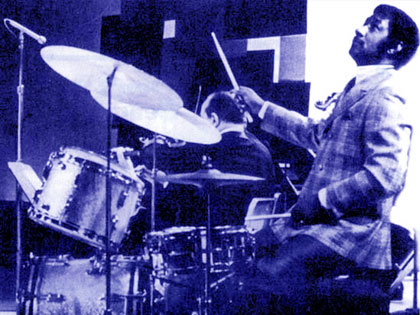OK I need to vent a little. Please forgive me if this sounds negative but I’m really hoping to pass along some knowledge. I’ve been playing guitar for over 40 years and must have played in over 20 different bands during that time. This has taken me many years to learn.
Anyone who’s been playing in blues bands for a while will agree…
A blues band is only as good as the drummer.
I was talking to some players just last night at a blues jam about this very subject. I won’t name names but we all agreed that when we go to a jam the worst thing that can happen is to get stuck playing with a lousy drummer.
And it’s not usually about their chops. Many drummers can play their drums just fine. They just don’t know how to play the song.
And this doesn’t just apply to drummers… it really applies to everyone in the band. And yes, at blues jams this issue is persistent for just about everyone. Most jammers don’t understand how to play the song. And as beginners why should they. That’s why they are at a jam in the first place.
So please forgive me. If you are a new player and just learning then this is not about you… and this may be a chance to learn something important.
But if you’ve been playing for a long time and still don’t get this, then this is aimed at you. It’s time for you to start listening and learning how to play the song correctly. This will help your playing and get you more gigs.
So what do I mean by playing the song?
The great blues bands, or any type of band for that matter, have a few common tendencies.
1. Everyone Plays Very Simply
The key to locking in with each other is to find a simple groove for the song and then everyone locks into that groove… especially the drummer. This requires playing simple parts that synchronize with that groove (see the video below). This doesn’t require any great skill on your instrument, but it does require one other important thing…
2. Everyone Listens To Each Other
Now this sounds simple but for some reason it isn’t. In the heat of the moment (and under the influence of something) we all tend to get a little carried away with our own playing. We hear what we are doing but we don’t always listen to what everyone else is playing.
And once we start listening and hearing each other, we have to then come up with parts that fit together. Parts that enhance the song and at the same time support what ever the lead instrument or singer is doing.
3. Everyone Understands What Should Be Happening In The Song
OK this is a bit more complicated and requires an advanced understanding of the music.
Different styles of blues songs require specific parts to work. When someone calls a rhumba, or a Chicago shuffle, or a flat tire shuffle, the drummer needs to know what that means. If you are playing a B.B. King style shuffle, for example (like in the video below), there’s just certain parts that work. The style, the groove, and the parts you play need to be played correctly. There is a vocabulary of parts that work for that style of song. Yes there are variations, but everyone in a great blues band stays close to using this vocabulary and way of playing the song.
Learning to do this takes time and listening. Listening to great bands is one way to begin to learn this.
Another basic skill required to play the song correctly is to understand tension and resolution. Here’s what I mean…
Beyond the correct parts to be played for that style of song, there is also a sophisticated and subtle thing that happens in great music. The song is constantly moving from creating tension to creating resolution. This interplay between tension and resolution is what holds the listeners attention and adds the real emotion to the song.
Like a great symphony that moves between loud dramatic sections to soft mellow and usually simple passages, even a simple blues song should do the same thing. The dynamic range (the difference between loud and soft sections) should be wide. With every part of a song (intro, verse, chorus, bridge, leads, etc.) having very distinct volume levels that synchronize with the emotional level of the particular part of the song.
A guitar lead for example should start softly and slowly build (I call it shifting gears) as the lead part builds. All of the other musicians should be supporting this building process and the parts they play as the lead shifts through gears should change to match what the lead player is doing.
OK What Does All This Have To Do With The Drummer…
Ya I know I started this by picking on bad drummers. That’s because…
The drummer is master and commander of all that happens in the song. If the drummer doesn’t play simply when required and then also play more powerfully when the song calls for it, the song cannot achieve it’s goals of wide dynamic range and creating tension and resolution. In other words, if the drummer doesn’t “get” what should be happening in the song, then it doesn’t really matter what everyone else is doing. Bad drumming can trump all the other good playing by everyone else in the band.
That’s why I say a blues band is only as good as the drummer. If the drummer is great then the band has potential for being great. If not it will always be less than… well great.
Of course, the other members in the band have to “get it” too. But it doesn’t take great chops on your instrument to do that. It just takes listening hard.
Now here’s a great band showing you how it’s done. Listen and learn!
By the way the drummer here is Chris Peet… one of the best young drummers around. Notice how simply he plays and just locks it in the pocket for most of the song.
And if you are a great drummer in the Tampa Bay area… contact me. I’ve been looking for you.





